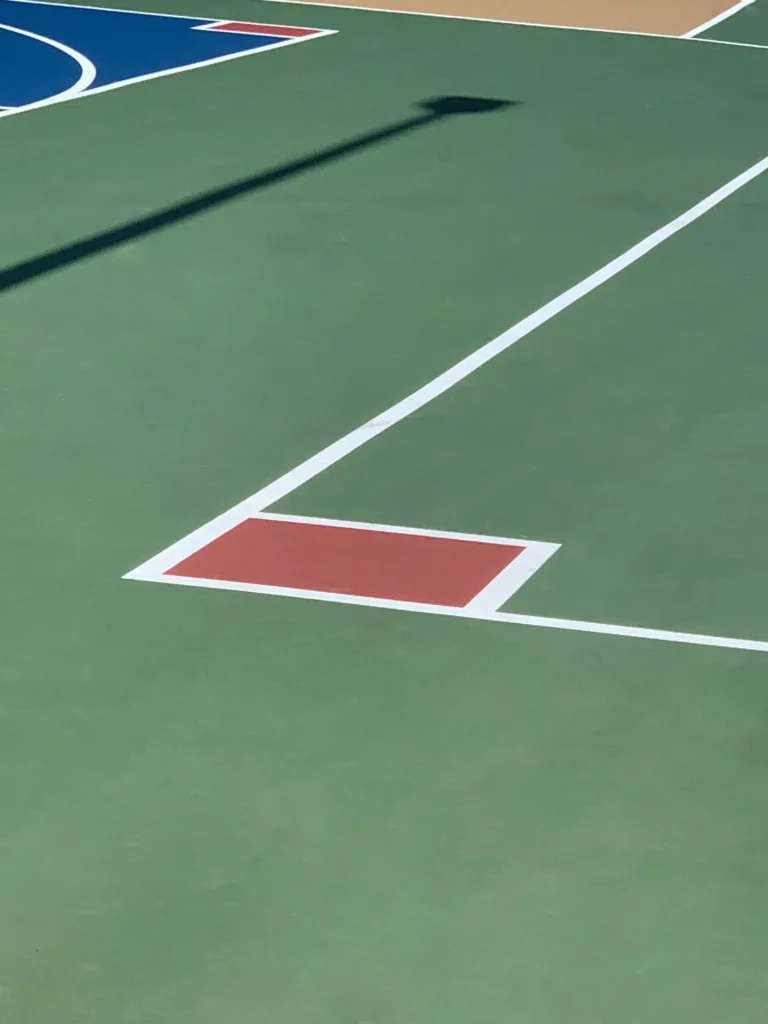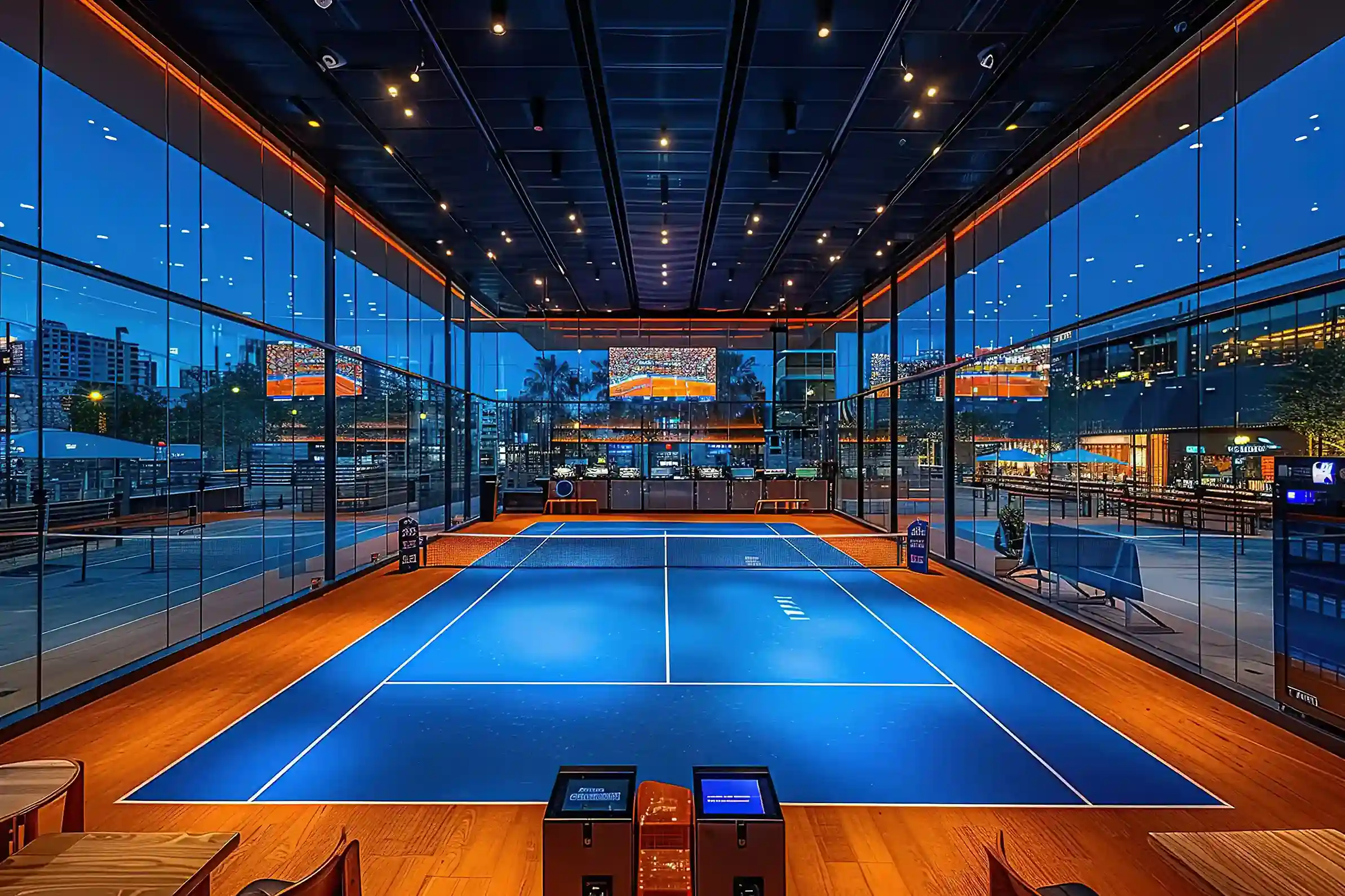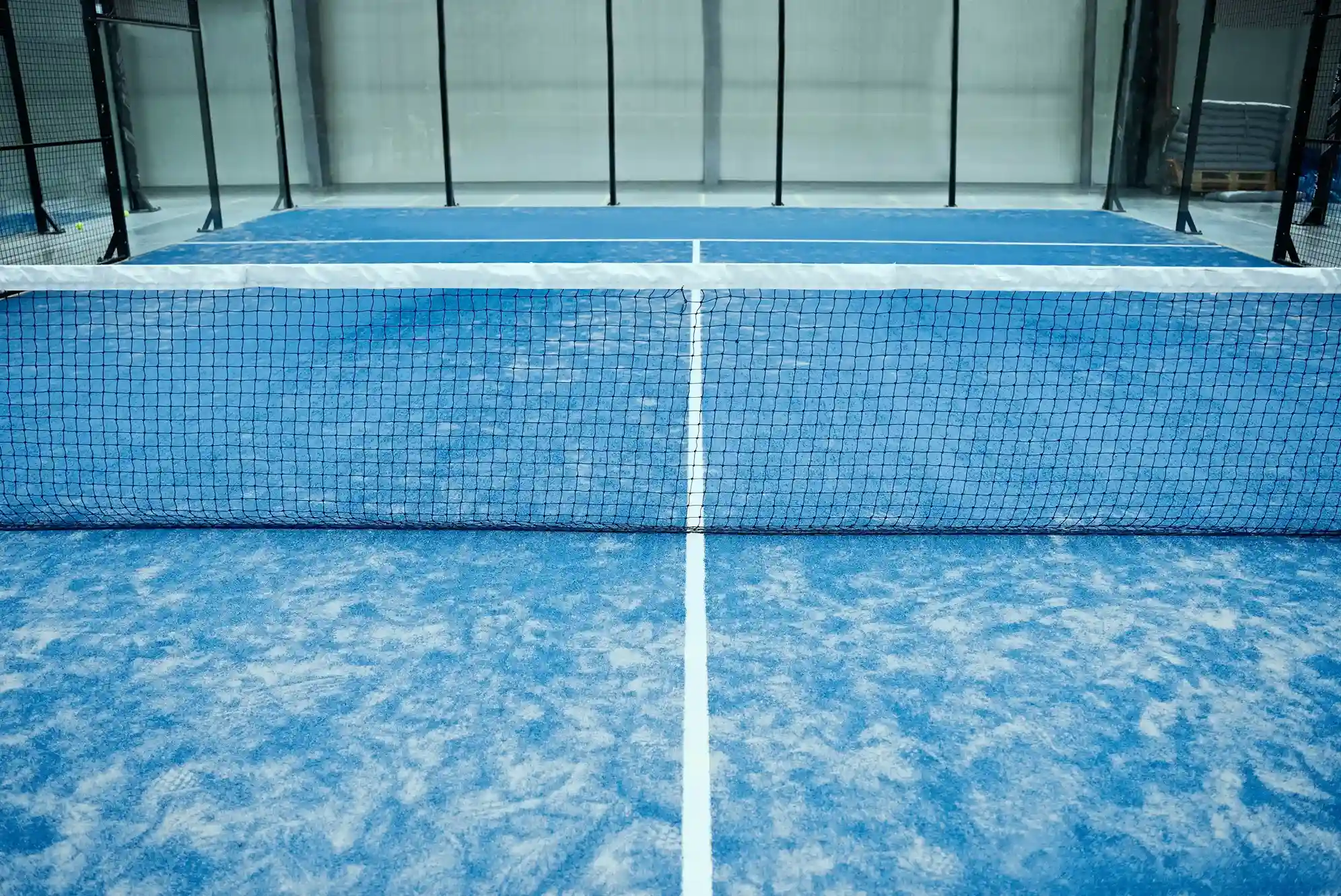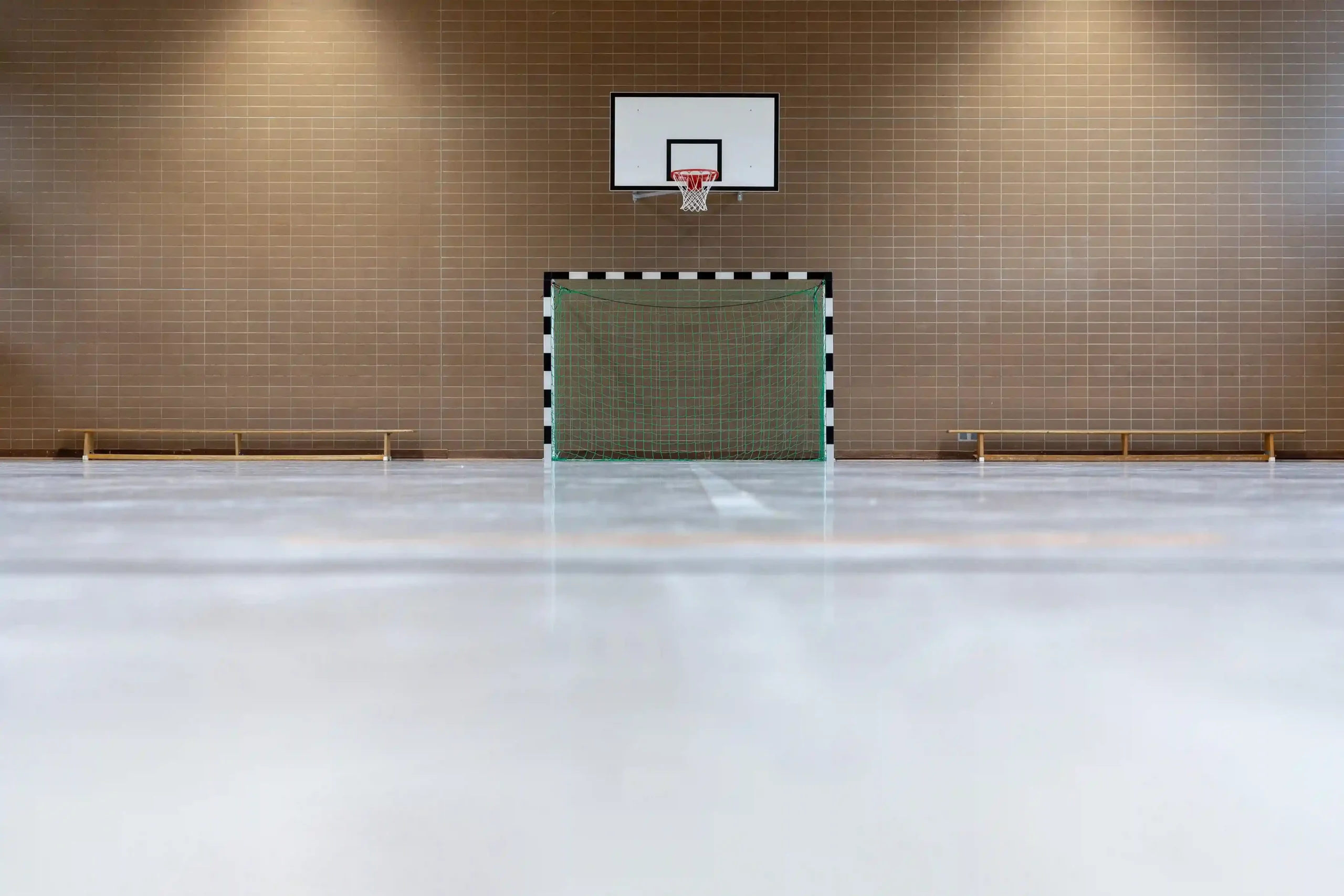Over the past few years, sports facilities across the world have started replacing traditional flooring with a more modern solution. That solution is PVC sports flooring. From community gyms to professional basketball and pickleball courts, this type of surface is quickly becoming the top choice. But what exactly makes PVC sports flooring so popular? Is it just a trend, or is there more to the story?
Let’s explore why so many sports centers are switching and what makes PVC sports flooring the new global standard for indoor courts.
What Is PVC Sports Flooring and How Is It Different?
Before we dive into the reasons why it’s becoming the global standard, let’s take a closer look at what PVC sports flooring actually is. You may have seen it in your school gym or a local recreation center without even realizing it.
PVC stands for polyvinyl chloride, a durable and flexible plastic material. When used in sports flooring, it’s layered with foam backing, fiberglass mesh, and wear-resistant coatings. These layers work together to create a smooth, supportive surface made for movement.
So, how is it different from traditional materials like wood or concrete?
Let’s break it down.
How It’s Made
PVC sports flooring is typically made of multiple layers that serve different purposes:
- Top Layer: This is wear-resistant and designed for grip and traction.
- Middle Layer: Often reinforced with fiberglass for stability.
- Bottom Layer: Usually made of foam or cushioned material that adds shock absorption.
This layered design makes it strong, safe, and perfect for high-impact sports.
Key Differences from Other Flooring Types
Traditional wooden floors are beautiful but expensive to install and maintain. They require sanding, sealing, and can be damaged by moisture. Concrete or acrylic floors are cheaper, but are hard on the joints and can get slippery.
PVC sports flooring, on the other hand, is:
- Easier to install
- Softer underfoot
- Resistant to water and wear
- More affordable over time
This winning combination is what sets it apart and gets facility owners to take notice.
So now that we understand what it is, let’s talk about why it’s catching on everywhere.


Why More Facilities Are Choosing PVC Sports Flooring Worldwide
It’s one thing to say PVC sports flooring is different. It’s another to explain why it’s becoming a global standard. The truth is, it’s not just one factor driving this shift–it’s a combination of performance, practicality, and popularity.
As more people take part in sports like basketball and pickleball, the demand for high-quality, low-maintenance surfaces has grown. Let’s take a look at how PVC sports flooring is meeting that demand in different parts of the world.
Global Trends in Sports Flooring
From schools in Europe to training centers in Asia, PVC sports flooring is being installed more than ever. It’s especially common in multi-purpose gyms, where the same floor needs to support basketball, volleyball, and even fitness classes.
Countries in the Middle East and Africa, where climate and cost play a major role in building materials, are also turning to PVC. It handles humidity well, doesn’t warp, and lasts a long time without needing expensive care.
In short, it works almost anywhere.
Use Cases in Basketball and Pickleball Courts
Let’s not forget the sports themselves. Basketball and pickleball are both fast, energetic games that need a reliable surface.
In basketball, the bounce of the ball matters. PVC flooring offers consistent bounce and grip, making it a strong choice for both training and competition courts.
Pickleball is gaining popularity fast, especially in North America. Many new pickleball facilities now prefer PVC sports flooring because of its comfort, especially during long matches.
So the question is: what are the specific benefits for athletes and players?


The Benefits of PVC Sports Flooring for Indoor Sports
By now, you might be wondering what it actually feels like to play on PVC sports flooring. What does it offer that other types of flooring don’t? Let’s look at the core benefits that make this material a smart and safe choice for indoor sports.
Comfort and Shock Absorption
One of the most noticeable benefits is comfort. PVC sports flooring is built with a cushioned layer that reduces the impact on your knees, ankles, and back. This is especially helpful for younger players and older adults who play regularly.
The shock absorption also reduces fatigue. Athletes can train longer and harder without the same wear and tear on their joints.
Safety and Performance
Safety is always a top priority in sports. PVC floors offer strong traction, which helps prevent slips and falls. Some types even come with a textured surface that keeps grip even when a little wet.
In addition, the surface provides a consistent ball bounce and smooth movement. This matters more than you think, especially in competitive play.
Visual Appeal and Customization
PVC sports flooring doesn’t just perform well–it looks good too. You can choose from a wide range of colors, wood-like finishes, and even add court lines or logos right into the floor.
This makes it ideal for schools, clubs, and even branded sports events. A sharp-looking court can make a great first impression.
But are the benefits only about play? What about behind-the-scenes maintenance?
How PVC Sports Flooring Helps You Save Time and Money
Let’s shift gears for a moment. If you’re managing a gym, building a court, or planning a facility, you’re not only thinking about player experience–you’re thinking about long-term costs.
That’s where PVC sports flooring shines again.
Quick Installation
Unlike wood floors that take weeks to install, PVC flooring can be rolled out or clicked into place quickly. Some modular systems are ready in just a few days.
This means less downtime for your facility and faster project completion.
Low Maintenance, Long Life
PVC is super easy to clean. A simple mop with a neutral cleaner keeps it looking fresh. There’s no need for sanding, waxing, or polishing.
With proper care, many PVC sports floors last 10 to 15 years. Some are even longer. That’s a huge return on investment when you consider the low upkeep costs.
So, should every sports project use PVC? Let’s take a closer look.
Should You Choose PVC Sports Flooring for Your Project?
Choosing the right flooring isn’t just about price or looks–it’s about purpose. If your facility hosts high-energy sports, community events, or school activities, you need something reliable.
PVC sports flooring brings a balance of comfort, safety, and easy upkeep. It works well in a wide range of spaces, from school gyms and community centers to pro-level courts.
Also, manufacturers like VMKON offer custom options, bulk deals, and full support to help you get the right product for your needs. So whether you’re planning a brand-new court or upgrading an old one, PVC might be the answer.
Conclusion: Ready to Talk About PVC Sports Flooring?
As we’ve seen, PVC sports flooring is more than just a surface. It’s a smart, modern solution for today’s indoor sports environments. From performance and safety to looks and savings, it offers a complete package.
If you’re thinking about building or upgrading a basketball or pickleball court, we’d love to help. VMKON has worked with clients across the globe to deliver quality flooring that performs on every level.
Have questions? Want a quote? Reach out to us today, and let’s start building something great together.
Frequently Asked Questions
What is PVC sports flooring made of?
PVC sports flooring is made from layers of polyvinyl chloride, often combined with foam backing and fiberglass mesh. These layers create a strong, cushioned surface that’s perfect for indoor sports like basketball and pickleball.
Is PVC sports flooring suitable for competitive sports?
Yes, it is. PVC sports flooring offers excellent ball bounce, grip, and shock absorption. Many professional and semi-professional courts around the world use PVC because of its performance and safety features.
How long does PVC sports flooring last?
With proper care and maintenance, high-quality PVC sports flooring can last between 10 and 15 years. It’s designed to handle heavy use while keeping its appearance and performance.
Is it easy to install PVC sports flooring?
Absolutely. PVC flooring can be rolled out or installed using interlocking tiles. Compared to hardwood or concrete, installation is faster and requires less specialized labor.
How do you maintain PVC sports flooring?
Maintenance is simple. Just clean it regularly with a damp mop and a neutral-pH cleaner. There’s no need for sanding, waxing, or sealing, which saves time and money.
Can PVC sports flooring be customized?
Yes. You can choose different colors, finishes, and even add logos or court lines. This makes it ideal for schools, clubs, and branded sports facilities.







